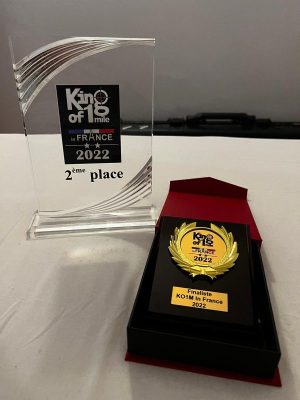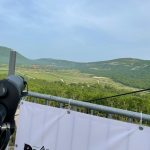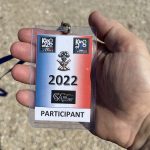Top 5 tips from some of KO2M-KO1M’s finest shooters

Top 5 tips from some of KO2M-KO1M’s finest shooters
The King of 2 Mile and the King of 1 Mile, or KO2M-KO1M, is one of the world’s most prestigious long-range shooting competitions – and for good reason. Hitting a target at range is challenging at the best of times, but when that range is a full mile (1,600m), it’s a whole different ball game.
To get an insight into what it takes to shoot at an elite level, we spoke to Stefan and Harry, the ultra-long range team duo who claimed 2nd place at the 2022 KO1M in France.
Read on to discover their top five tips for long-range mastery.
-
Get the right tool for the job
Many rifles are capable of engaging targets at extended range, but not every rifle is right for every shooter.
From the barrel and stock to the bipod and scope, each component of a rifle should be tailored to your specific preferences as a shooter. Think of it this way, you could probably run a 10k in someone else’s shoes, but wouldn’t it be more comfortable to wear your own?
A surgeon by trade, Stefan is built for precision, so it’s only right his rifle is too.
The gun of choice for the 2022 KO2M was the Desert Tech ELR rifle in 375 Cheytac, a custom ULR rifle designed and produced exclusively by Solid Solution Designs in the Netherlands. Checkout the below specifications for Stephan’s KO1M Custom rifle.
SSD Customized barrel, action and chassis, original built by Dolphin Gun Company
Barrel: Bartlein 30” twist 1:9,5
Action: Barnard PL
Chassis: XLR Evolution HD
Bipod: Fortmeier bipod
Scope: Hensoldt 3,5-26×56
Trigger: Jewel
Scope mount: Manz adjustable
Bubble-level: US optics rail mounted
Color: Burnt bronze chassis, Stainless barrel and brake
-
Spot with confidence
Pulling the trigger and sending a round ripping through the air is only one minute detail in the KO1M shooting process. Without effective spotting, you might as well be shooting in the dark.
The importance of a quality spotting scope cannot be overstated, especially when shooting at ranges of a mile or more. From the level of variable zoom to the way it feels in your hand, small details make enormous differences when the margin of error is so small. Stefan and Harry opted for the Hensoldt Spotter 45 with a H-32 reticle, combining ease of use with durability and clarity at extreme range.
Take the time to consider your options when finding your next spotting scope – it might just be the difference between success and failure.
-
Not all rounds are created equal
To the layman, a bullet is a bullet. But to experienced shooters and gun enthusiasts like Stefan and Harry, the hardware you choose can make all the difference.
Loading their custom SSD rifle with 300 Remington Ultra Magnum rounds, the duo maintained an extreme spread of 2-3m/s with their handloaded ammunition. Stefan takes the art of reloading extremely seriously – weight sorting each bullet after meplat trimming and painstakingly pointing each round with expert precision.
Arguably the most important part in the process is practice. The most consistent, beautifully formed rounds can cause even the best shooters some grief, if they’re not accustomed to their flight.
Your rifle deserves only the very best in custom ammunition – and so do you.
Cartridge (handloaded)
Caliber: 300 RUM
Brass: Norma
Bullet: Berger Target Hybrids 230 grain
Primer: CCI magnum large rifle primers
Powder: VV 570 with 89 grain
Velocity: 928m/s or 3044 fps
Die set: WTC custom die and a Whidden pointing die
-
Communication and teamwork
Harry and Stefan have known each other and shot together for years, but many competition shooters may not have that luxury.
Whether you know your spotter well or you’ve just met, it’s absolutely crucial to develop an understanding with each other. Jumping straight into the shoot without effective pre-planning can result in frustration, confusion and, most importantly, inaccurate shots.
Stefan made two things very clear:
- Read back every line of communication to your spotter
- Define and KNOW your terminology
These two tips will set you in good stead, helping your spotter ensure you have understood their directions, and giving you the confidence to quickly make adjustments without repetition or confusion.
Stefan and Harry chose to dial in for wind throughout the shoot, which was made effortless thanks to their shorthand and confidence in each other.
-
Practice makes perfect
Shooting at ultra-long range is an artform – one which takes years of diligent practice to master. You could be the greatest shooter at the range, but hitting steel from over a mile away is a different animal entirely.
It goes without saying, but shooting at these distances is not an easy thing to arrange. Unfortunately, but perhaps fortunately for the general public, setting up your rifle and firing a few rounds two miles across the countryside tends to be frowned upon.
Thankfully, there are organisations across Europe which specialise in EXLRS – Extended Long-Range Shooting. These organisations host events specifically designed to allow shooting enthusiasts to test and hone their skills at extreme distance.
The One Mile Club is Europe’s largest international EXLRS group, with upcoming events in Europe now open for registration.
If you want to take your prowess as a marksman to new heights and try your luck at earning the coveted One Mile Patch, you can find out more here.
So, let’s summarise:
- Get the right tool for the job – your gun, your way
- Spot with confidence – seeing is half the battle
- Not all rounds are created equal – custom handloaded rounds can transform your rifle’s performance
- Communication and teamwork – spotter and shooter. Without one, the other cannot succeed
- Practice makes perfect – test yourself and learn from some of Europe’s greatest shooters before hitting the field of competition
Good luck – shoot straight.






